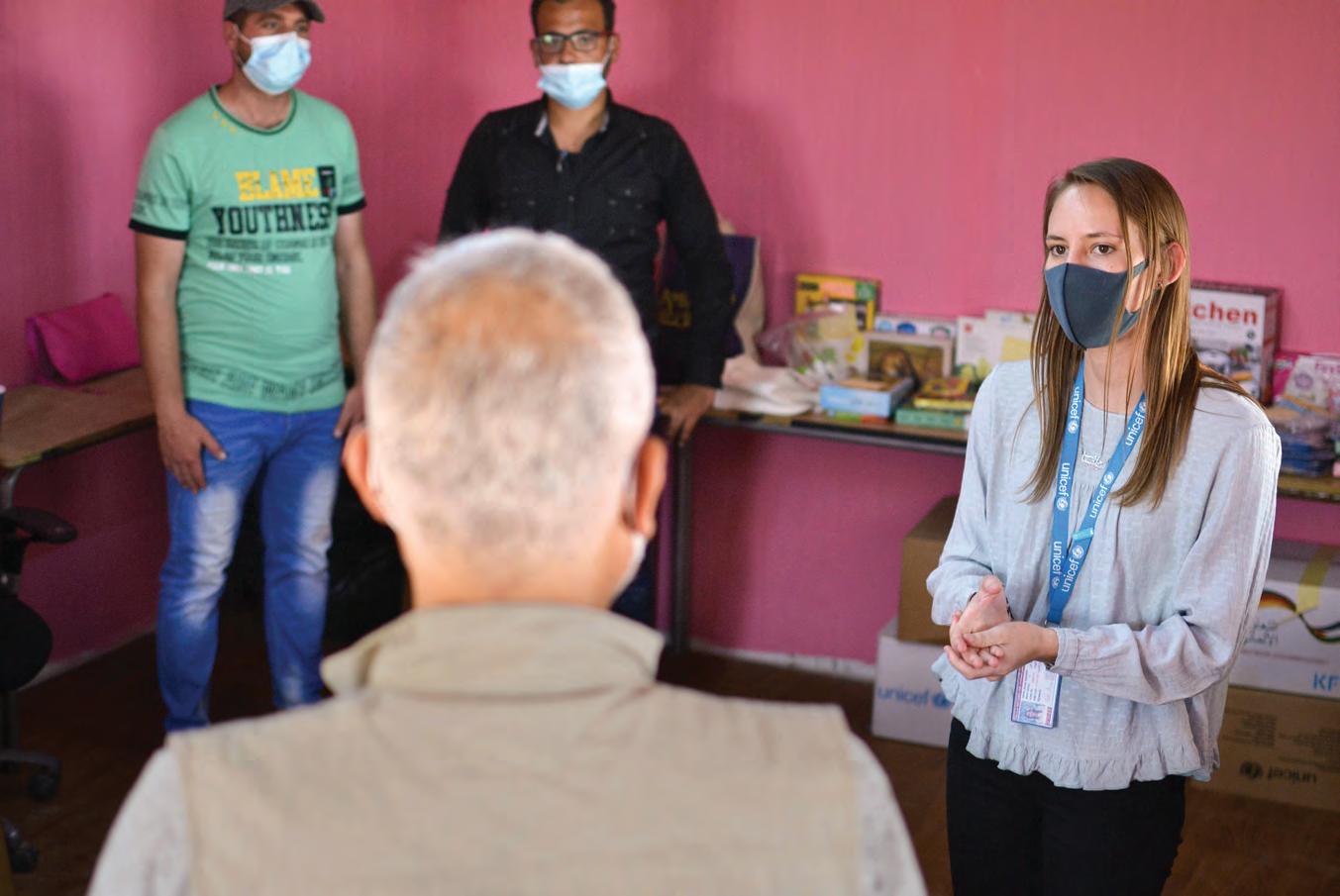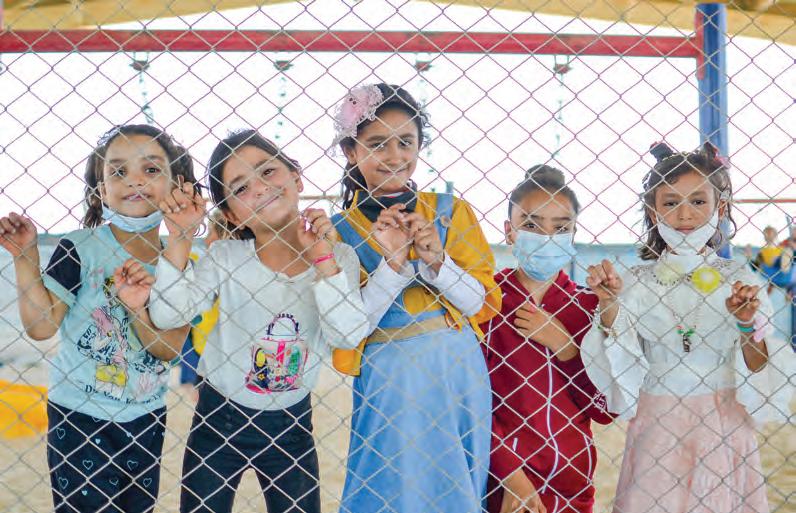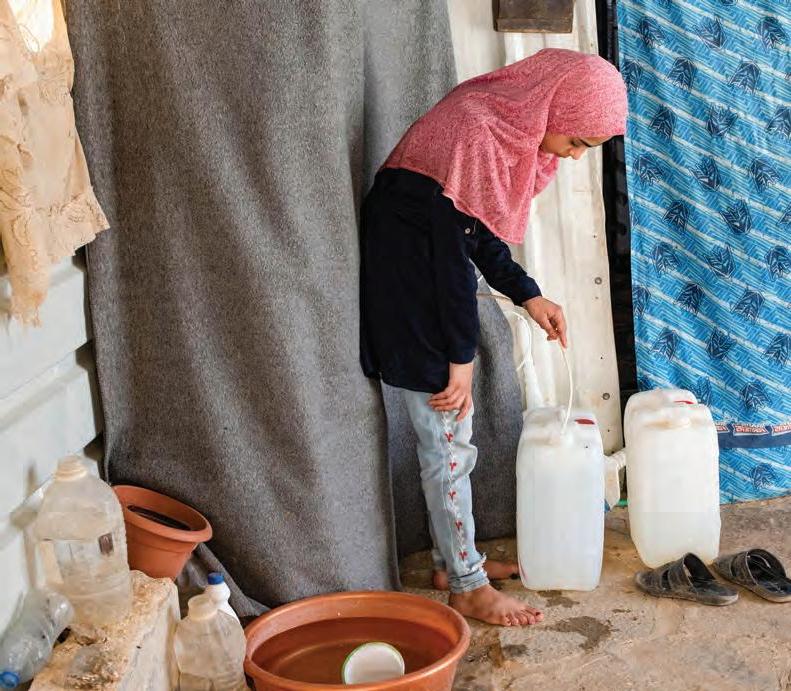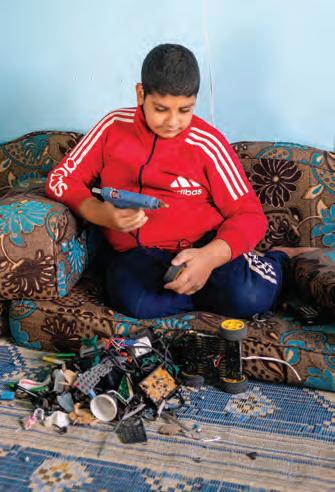
4 minute read
EMBRACING THE WORLD
Working for UNICEF in Jordan, Sylvia Skerry ’14 is giving young Syrian refugees a shot at a better life—BY KATE LAWLESS
Skerry, right, discusses her work helping to provide local young people in Jordan with meaningful skills and opportunities
It’s 6 p.m. in Amman, Jordan, and Sylvia Skerry ’14 is a few minutes late for a Zoom call. It’s her day off from her job at United Nations Children’s Emergency Fund (UNICEF) and she’s just returned from lunch with a friend.
Finishing up lunch at 6 p.m.? She explains: “Lunch in Jordan is…you arrive at 1, you eat at 3, you have afterlunch tea, then dessert, then fruit….” Her friend’s mom had prepared traditional maqlubeh—literally, in Arabic, “upside-down”—a dish of rice, vegetables, and chicken cooked in a large pot and then inverted onto a platter and served with yogurt and a cucumber and tomato salad. The labor-intensive dish takes hours to make, and that’s why Skerry says, with a knowing smile, “You just try to get invited over.” Skerry seems at home overseas in this, her third year in Jordan, where she works overseeing three centers that provide skill-building programs and a safe space for youth in the Za’atari and Azraq Syrian refugee camps. Raised in Rhode Island, she boarded at Williston for four years, then attended the College of Charleston, where she took a semester abroad in Morocco and three years of Arabic. However, her blossoming interest in the Middle East began while a student at Williston. She took World Religions with Tom Johnson, and loved it. Her family was secular, she said, and she was fascinated to find that religious studies was about more than just faith. “It’s about culture, history,” she said.
In college, she kept being drawn back to religious studies, taking a class in Arab and Islamic World Studies and signing up for Arabic language classes. She struggled initially. “Williston prepared me for college,” she said, “but nothing prepared me for Arabic.” Some tutoring helped her get up to speed. After attending Yarmouk University in Irbid, Jordan, to study Arabic (she now speaks the Jordanian dialect fluently), she began working for UNICEF in early 2019.
In her role as youth programme associate, Skerry travels each day from Amman, Jordan’s cosmopolitan capital, to the camps. The teams in the youth centers there implement programs that allow 16- to 24-yearolds to develop soft and technical skills and then take concrete steps toward their goals. Counselors also refer young people to services and help them apply for scholarships for higher education.
One program encourages young people to find innovative solutions to everyday problems in the camps,
such as the lack of transportation for women and girls, Skerry says. Bicycles are not seen as culturally appropriate for females there, and so a team of girls is designing a “touk touk,” a bike with a roof covering, so that women can travel without relying on male family members for transportation, and also be protected from devastating heat and sandstorms. “It’s a skill-building opportunity for them,” Skerry says, “but also, if they are able to be successful, it’s an employment opportunity.”
“The range of ideas they come up with is kind of amazing,” she adds.
The camps, run by the United Nations High Commissioner for Refugees and the Jordanian government, were designed as temporary shelters for Syrians fleeing the civil war that began in 2011. However, many refugees have lived there for close to a decade now. Za’atari camp, the largest haven for displaced Syrians and the second-largest refugee camp in the world, is home to nearly 80,000 people. Azraq camp, built in 2014 at a site in the middle of the desert, has an orderly appearance with rows of identical white insulated houses, and is home to roughly 35,000 Syrians. “There’s literally nothing for miles and miles and miles,” Skerry says. “Occasionally there’s a Bedouin with his camels.”
Many of the young people Skerry works with have traumatic memories of war, and there are psycho-socialsupport components to the trainings UNICEF offers. “Especially since COVID, we are having more discussions about mental health,” she says. However, her focus is on giving young people the feeling of being productive, socially active, and engaged. “Yes, there is a lot of trauma,” she says, “but we want them to imagine a future where they can be successful and have a life outside of the camp.” From top: Girls play at a local Makani center, a UNICEF-supported safe space that provides children with educational, recreational, and psycho-social support activities and programs. A girl fills water tanks at a refugee camp, one of the vital services provided by UNICEF. A boy puts together his robot for an upcoming robotics competition at the UNICEF-supported youth center.













